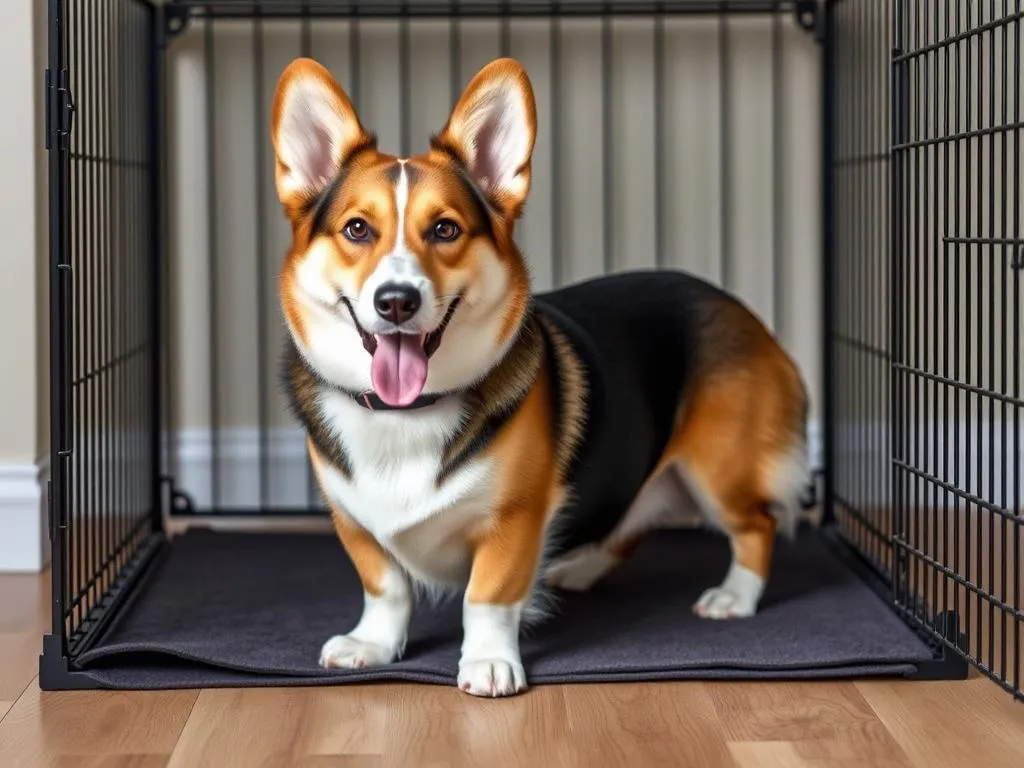
Introduction
Dog training is an essential part of responsible pet ownership, allowing for a harmonious relationship between you and your furry friend. Among the various training methods, crate training holds a special place, particularly for breeds like the Corgi, known for their intelligence and playful nature. Crate training not only provides a safe haven for your dog but also aids in housebreaking and reducing anxiety. This guide will walk you through how to crate train a Corgi, ensuring your training experience is both effective and enjoyable.
Understanding Crate Training
What is Crate Training?
Crate training involves teaching your dog to see their crate as a safe and comfortable space. The crate acts as a den where your dog can relax and feel secure. Many people mistakenly believe that crating is a form of punishment; however, when done correctly, it can be a positive experience that promotes good behavior.
Benefits of Crate Training for Corgis
Crate training offers several advantages, especially for Corgis:
- Safe Space: A crate provides a secure environment where your dog can retreat when feeling overwhelmed or anxious.
- Housebreaking Aid: Crate training can significantly help in housebreaking, as dogs naturally avoid soiling their sleeping area.
- Travel and Vet Visits: A crate-trained dog is often more comfortable during travel and vet visits, making these experiences less stressful for both the pet and the owner.
Choosing the Right Crate
Types of Crates
When selecting a crate, you’ll find several types available, including:
- Wire Crates: These are sturdy and well-ventilated, allowing for visibility while keeping your Corgi secure.
- Plastic Kennels: Ideal for travel, they provide a more enclosed space, making dogs feel cozier.
- Soft-Sided Crates: Lightweight and portable, these are great for use in the home or during travel, but may not be suitable for dogs that chew or scratch.
Size Matters
Choosing the right size crate for your Corgi is crucial. Measure your dog from nose to tail and from the ground to the top of their head when standing. The crate should be large enough for your Corgi to stand, turn around, and lie down comfortably. A cramped crate can lead to discomfort and anxiety.
Location of the Crate
The placement of the crate can influence how your Corgi perceives it. Here are some tips for choosing the best location:
- Quiet Area: Place the crate in a low-traffic area of your home, away from loud noises and distractions.
- Close to Family: Positioning the crate in a common area allows your Corgi to feel part of the family while still having their own space.
- Comfortable Environment: Ensure the area around the crate is comfortable, with adequate ventilation and temperature control.
Preparing for Crate Training
Gathering Supplies
Before you begin crate training, gather the necessary supplies:
- Bedding: A soft blanket or dog bed for comfort.
- Toys: Safe chew toys can make the crate more inviting.
- Water Bowls: Consider a spill-proof bowl for hydration while crated.
- Treats: High-value treats for positive reinforcement during training.
Basic Commands to Teach
Before introducing your Corgi to the crate, it’s beneficial to teach them basic commands like “come,” “sit,” and “stay.” Establishing these commands creates a foundation for effective communication during training sessions.
The Crate Training Process
Introducing the Crate
Start crate training by encouraging your Corgi to explore the crate at their own pace. Here are some strategies:
- Open Door Policy: Keep the crate door open initially to allow your dog to enter and exit freely.
- Use Treats and Toys: Toss treats or favorite toys inside the crate to entice your Corgi to explore.
- Positive Associations: Whenever your Corgi shows interest in the crate, praise them and offer a treat, reinforcing the positive experience.
Gradual Familiarization
Once your Corgi is comfortable entering the crate, begin short sessions of crate time:
- Short Durations: Start with just a few minutes at a time, gradually increasing the duration as your Corgi becomes more comfortable.
- Monitor Comfort Levels: Pay attention to your Corgi’s behavior and body language. If they seem stressed, reduce the crate time and gradually reintroduce it.
Establishing a Routine
Creating a consistent routine is vital for successful crate training:
- Regular Schedule: Set a schedule for crate time, such as mealtime, bedtime, and during your absence.
- Bathroom Breaks: Ensure your Corgi has regular bathroom breaks, especially before crating them for an extended period.
Dealing with Resistance
It’s common for dogs to resist crate training initially. Here’s how to address this:
- Common Issues: If your Corgi displays reluctance, such as refusing to enter the crate or whining, do not force them.
- Calm Environment: Use calming techniques, such as soft music or a favorite blanket, to create a more inviting atmosphere.
Reinforcing Positive Behavior
Positive Reinforcement Techniques
Using positive reinforcement is key to successful crate training:
- Treats and Praise: Use treats and verbal praise to reward your Corgi when they enter the crate willingly or remain calm inside.
- Timing Matters: Be consistent with your rewards immediately after desired behavior to reinforce learning.
Building Independence
As your Corgi becomes more comfortable in the crate, encourage independence:
- Longer Duration: Gradually increase the time your Corgi spends in the crate while you’re at home.
- Practice Alone Time: Occasionally leave the room while your Corgi is crated to help them adjust to being alone.
Troubleshooting Common Issues
Excessive Barking or Whining
If your Corgi barks or whines in the crate, it’s important to understand the underlying reasons:
- Attention Seeking: Dogs often vocalize to get attention. If this is the case, avoid giving in to their demands.
- Check Comfort Levels: Ensure your Corgi is comfortable, with adequate bedding and ventilation.
Accidents in the Crate
Accidents can happen, especially during the early stages of crate training:
- Handling Accidents: If your Corgi has an accident in the crate, clean it thoroughly to remove odors and prevent repeat behavior.
- Bathroom Schedule: Maintain a strict bathroom schedule to minimize the chances of accidents.
Overcoming Anxiety
Some Corgis may struggle with separation anxiety during crate training:
- Gradual Departures: Practice leaving your Corgi in the crate for short periods while you’re home, gradually increasing the duration.
- Calming Aids: Consider using calming aids, such as pheromone diffusers or anxiety wraps, to help soothe your dog.
Transitioning from Crate to Freedom
Recognizing When to Transition
As your Corgi becomes more accustomed to the crate, you’ll want to assess when they are ready for increased freedom:
- Signs of Readiness: If your Corgi remains calm and relaxed in the crate and has not had accidents, it may be time to consider transitioning.
Gradual Transition Steps
Transitioning your Corgi from the crate to more freedom should be a gradual process:
- Supervised Freedom: Allow your Corgi to explore a small area of the house while supervised, gradually increasing their freedom as they demonstrate good behavior.
- Monitor Behavior: Keep an eye on your Corgi’s behavior during the transition, ensuring they remain calm and well-adjusted.
Conclusion
Crate training a Corgi can be a rewarding experience that benefits both you and your dog. By understanding the principles of crate training, choosing the right crate, and following a structured training process, you can create a safe and comfortable environment for your Corgi. Remember to be patient and consistent throughout the training journey. With time and dedication, your Corgi will come to view their crate as a cozy den, making crate training a valuable tool in your dog training arsenal.









